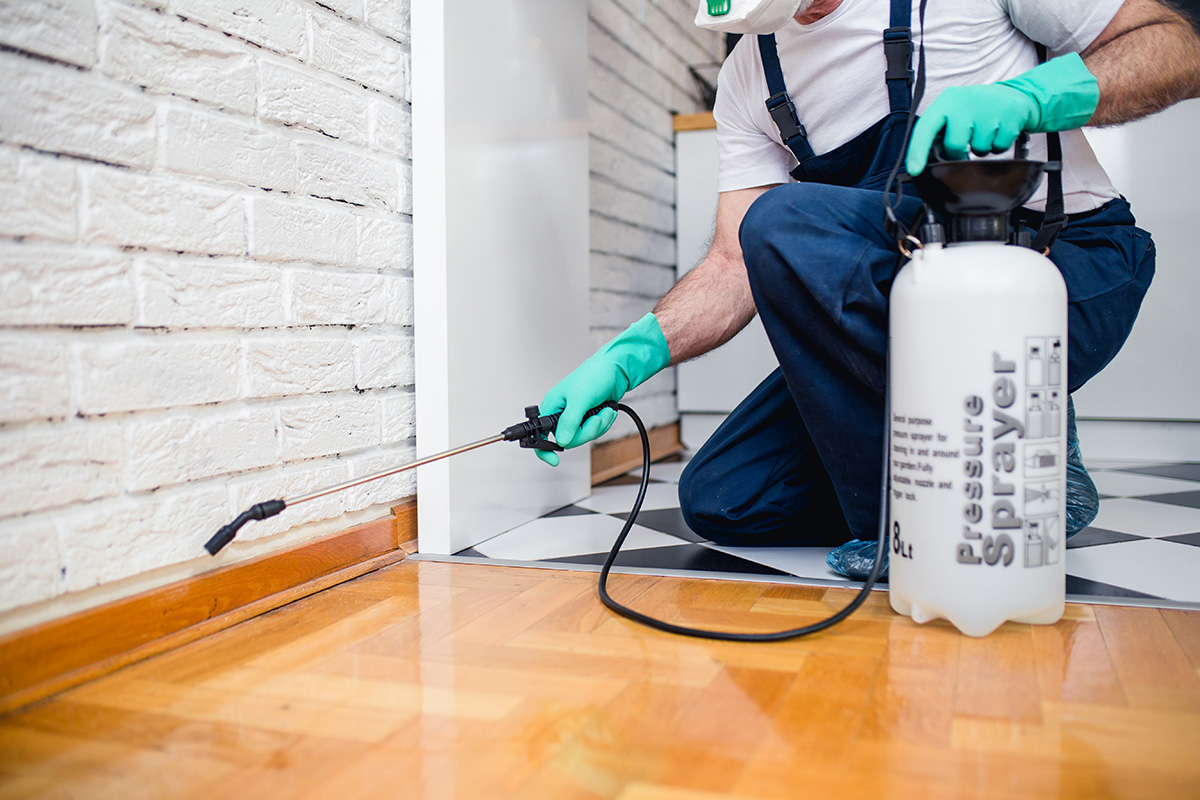Specialist A1 Charlotte Bed Bug Exterminator - Top Quality Solution Assured
Bed Bug Treatment Failure: Comparing Chemical Vs. Non-Chemical Solutions
In the realm of insect control, especially when taking care of the relentless issue of bed pests, the selection between chemical and non-chemical treatment services can be a crucial one. Both methods supply distinct advantages and downsides, affecting elements such as performance, safety considerations, and overall expense. By checking out the nuanced details of each approach, a clearer understanding of which course to go after in dealing with a bed bug invasion can be obtained.
Efficiency of Chemical Therapies
Chemical therapies for bed pest infestations have been widely acknowledged for their potent and rapid efficacy in eradicating these parasites. When taking into consideration the efficiency of chemical therapies, it is essential to comprehend that they can supply a fast and complete service to a bed bug issue. Expert pest control specialists usually depend on insecticides to target bed bugs at various phases of their life cycle, consisting of eggs, grownups, and nymphs. These chemicals typically function by interfering with the bed insects' nerves, leading to paralysis and ultimate death.
Furthermore, chemical therapies have the advantage of supplying recurring impacts, implying that they can remain to eliminate bed pests even after the preliminary application. This residual action is specifically useful in combating any prospective re-infestations. Furthermore, the quick activity of chemical therapies can bring relief to people facing serious bed pest infestations, permitting them to restore control of their living spaces swiftly.
Security Worry About Chemical Solutions
One vital element that needs mindful factor to consider when making use of chemical solutions for bed bug treatment is guaranteeing the safety and security of owners and the environment. Direct exposure to certain chemicals used in bed insect therapies can lead to breathing concerns, skin irritation, or various other adverse responses, particularly in people with pre-existing conditions or sensitivities.
Additionally, the environmental influence of chemical options is an additional considerable consideration. Some pesticides made use of in bed insect therapies might be damaging to helpful insects, wildlife, and ecosystems if they seep into the soil or water supply. It is necessary to use chemical therapies carefully, following security guidelines, and considering much less toxic choices to minimize these threats and ensure the efficient and risk-free monitoring of bed insect problems.
Benefits of Non-Chemical Methods
Thinking about the potential security concerns and environmental influence linked with chemical remedies for bed pest therapy, exploring non-chemical approaches offers a promising alternative with a number of distinctive advantages. Non-chemical treatments are eco pleasant, as they do Get More Info not contribute to air or water contamination, making them a lasting choice for pest control.
In addition, non-chemical services can be effective in targeting bed insects, including hard-to-reach areas where chemical therapies may not penetrate. Techniques such as warmth treatment, vacuuming, steam cleansing, and mattress coverings provide complete eradication without making use of dangerous chemicals. Additionally, non-chemical techniques can be much less turbulent, calling for very little preparation and permitting for quicker reentry right into treated locations. On the whole, going this with non-chemical bed bug therapy approaches not just prioritizes safety and environmental management yet likewise makes certain effective and extensive bug control.
Limitations of Non-Chemical Treatments

Additionally, non-chemical treatments usually need several applications to achieve effective removal. This can be taxing and might not always ensure full elimination of all bed bugs and their eggs, particularly in covert or hard-to-reach places.
Additionally, the success of non-chemical therapies heavily depends on correct execution and thoroughness, which can be testing for people without professional know-how. Insufficient application of non-chemical techniques might lead to incomplete elimination, bring about persistent problems and the need for extra therapies.
Consequently, while non-chemical therapies have their advantages, it is important to recognize these constraints and consider them when determining the most reliable technique for handling bed insect infestations.
Cost Comparison: Chemical Vs. Non-Chemical Options
Provided the limitations linked with non-chemical therapies, a vital facet to assess in the context of bed bug monitoring is the cost comparison between chemical and non-chemical options. In contrast, non-chemical therapies like warmth therapy or steam can be a lot more costly, with costs varying from $1,000 to $6,000 for a whole home. While the first cost of chemical therapies may seem lower, numerous therapies might be required to totally eliminate the infestation, possibly boosting the total expense.
Conclusion

Considering the possible security worries and environmental effect linked with chemical options for bed insect treatment, checking out non-chemical techniques offers a promising alternative with several distinctive advantages.Offered the constraints associated with non-chemical therapies, a crucial aspect to examine in the context of bed bug monitoring is the price comparison between chemical and non-chemical options. In contrast, non-chemical treatments like warm treatment or steam can be more pricey, with prices varying from $1,000 to $6,000 for a whole home. While the initial expense of chemical therapies may appear reduced, several treatments may be needed to totally remove the invasion, potentially raising the overall price.In verdict, when contrasting chemical and non-chemical bed bug treatment choices, it is essential to consider effectiveness, safety, benefits, restrictions, and cost.